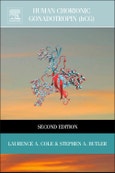Human chorionic gonadotropin (hCG) is produced during pregnancy by the embryo. It promotes progesterone production by corpus luteal cells. It also functions in pregnancy to promote angiogenesis in uterine vasculature, it immuno-blands the invading placental tissue so it is not rejected by the maternal uterine tissues, promotes the growth of the uterus in line with the growth of the fetus, promotes the differentiation of growing cytotrophoblast cells, promotes the quiescence of contractions in the uterine myometrium during the course of pregnancy, and also has function in growth and development of fetal organs.
The first edition described the detailed biology, clinical chemistry, and clinical perspectives of hCG and associated molecules, and examines hCG, hyperglycosylated hCG and hCG free ß-subunit, 3 separate and independent molecules with totally sovereign physiological functions.
The second edition will include coverage of the many new discoveries that have been made in the last five years: hCG analogues may be the actual driving signal of all human cancers. The editor estimates that 40% of the out of date material will be excluded and replaced with 40% of the exciting new findings. The book will also have a much clearer pregnancy and cancer focus.
Table of Contents
Part A. Introduction
Part B. Synthesis, Structure and Action Site
Part C. Continuous Dissociation and Degradation
Part D. Biological Function: Pregnancy
Part E. Biological Function: Normal Pituitary
Part F. Biological Function: Evolution
Part G. Biological Function: Gestational Trophoblastic Disease
Part H. Biological Function: Cancer
Part I. Clinical Applications
Part J. Assays and Antibodies
Part K. Test Applications and Standards
Part L. Methods
Part M. Ethics, Comments and the Future








